Growing Cabbage in Containers might sound like a challenge reserved for seasoned gardeners with sprawling acres, but I’m here to tell you it’s totally achievable, even if your “garden” is a sunny balcony or a small patio! Forget the image of endless rows of cabbages; we’re bringing this nutritious and versatile vegetable right to your doorstep.
Cabbage, a staple in cuisines worldwide, boasts a history stretching back thousands of years. From ancient Rome, where it was prized for its medicinal properties, to its integral role in traditional dishes across Europe and Asia, cabbage has nourished generations. But let’s be honest, buying cabbage from the store can sometimes be a gamble – you never quite know how fresh it is or where it came from. That’s where the magic of DIY comes in!
Imagine harvesting your own crisp, flavorful cabbage, knowing exactly what went into its growth. With a few simple tricks and the right container, you can enjoy the satisfaction of growing your own food, regardless of space constraints. This article is your guide to successfully growing cabbage in containers. I’ll share my favorite tips and hacks, from choosing the right variety to preventing common problems, ensuring you have a bountiful harvest. So, grab your gardening gloves, and let’s get started!
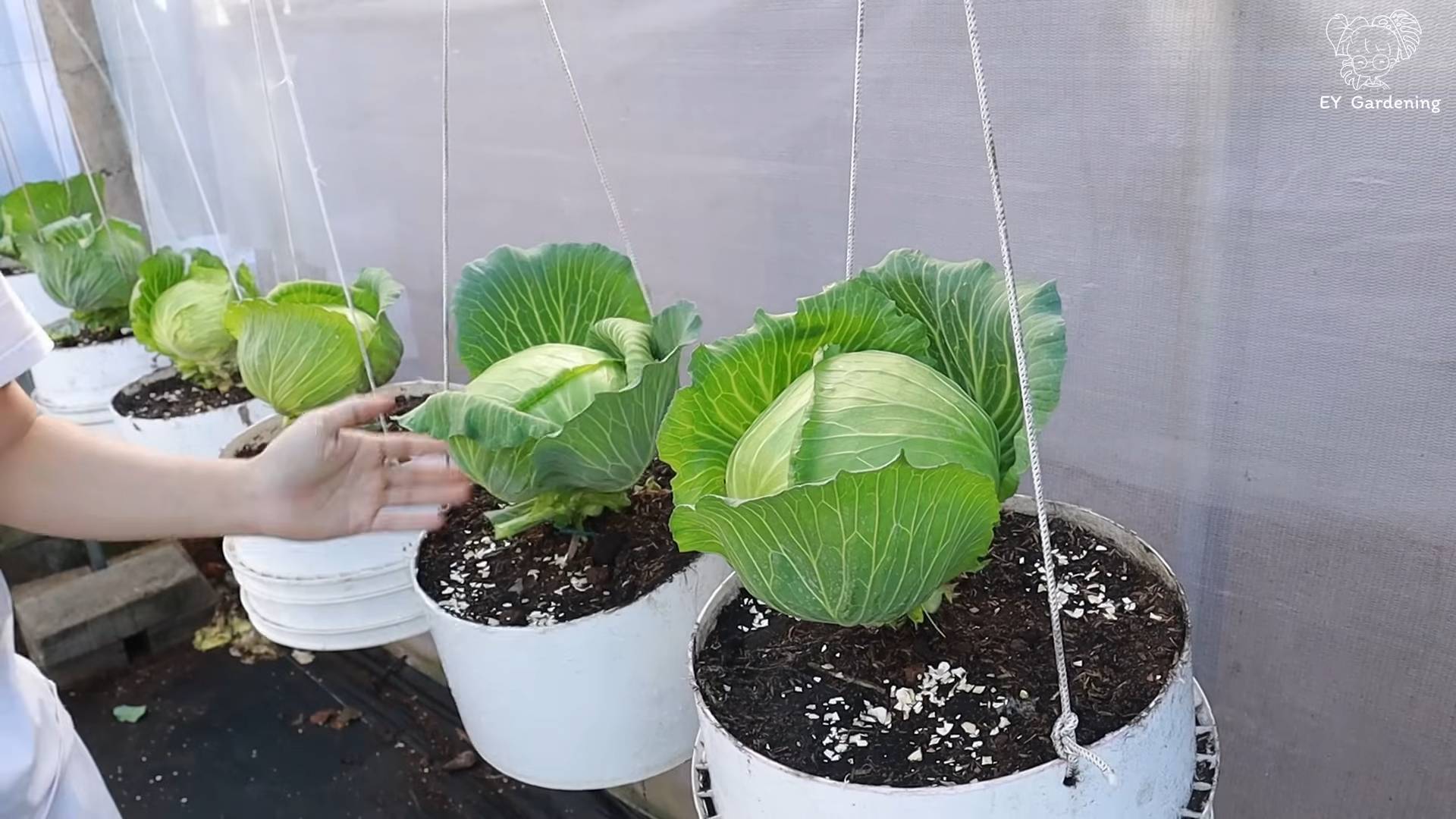
Growing Cabbage in Containers: A Beginner’s Guide
Hey there, fellow gardening enthusiasts! Ever thought about growing your own cabbage but felt limited by space? Well, I’m here to tell you that you absolutely can grow delicious, healthy cabbage right in containers! It’s easier than you might think, and I’m going to walk you through every step of the process. Get ready to enjoy fresh, homegrown cabbage, even if you only have a balcony or patio!
Choosing the Right Cabbage Variety
Not all cabbage varieties are created equal, especially when it comes to container gardening. You’ll want to opt for smaller, more compact varieties that won’t outgrow their pots. Here are a few of my favorites:
* ‘Dwarf Morden’: This is a super compact variety that’s perfect for small containers. It matures quickly and produces small, tight heads.
* ‘Golden Acre’: Another excellent choice for containers, ‘Golden Acre’ produces medium-sized heads and is known for its sweet flavor.
* ‘Red Express’: If you’re looking for a pop of color, ‘Red Express’ is a great option. It’s a smaller red cabbage variety that’s both beautiful and delicious.
* ‘Savoy Ace’: For a crinkled-leaf cabbage, ‘Savoy Ace’ is a good choice. It’s relatively compact and has a mild, sweet flavor.
Gathering Your Supplies
Before we dive into the planting process, let’s make sure you have everything you need. Here’s a checklist of essential supplies:
* Containers: Choose containers that are at least 12 inches in diameter and 12 inches deep. Cabbage needs room for its roots to grow. I prefer using plastic or resin containers because they retain moisture better than terracotta.
* Potting Mix: Use a high-quality potting mix that’s well-draining. Avoid using garden soil, as it can become compacted in containers and hinder drainage. I like to use a mix that contains peat moss, perlite, and vermiculite.
* Cabbage Seeds or Seedlings: You can start cabbage from seeds or purchase seedlings from a local nursery. Starting from seeds gives you more control over the variety, but seedlings are a quicker option.
* Fertilizer: Cabbage is a heavy feeder, so you’ll need a balanced fertilizer to provide it with the nutrients it needs. I recommend using a slow-release fertilizer or a liquid fertilizer that you can apply every few weeks.
* Watering Can or Hose: You’ll need a way to water your cabbage plants regularly.
* Trowel: A trowel will be helpful for planting your seeds or seedlings.
* Optional:
* Mulch: Mulch helps to retain moisture in the soil and suppress weeds. I like to use straw or shredded bark.
* Pest Control: Be prepared to deal with common cabbage pests like cabbage worms and aphids. I’ll talk more about pest control later.
Planting Your Cabbage
Now for the fun part – planting your cabbage! Whether you’re starting from seeds or seedlings, the process is pretty straightforward.
Starting from Seeds:
1. Sow the Seeds: Fill your container with potting mix, leaving about an inch of space at the top. Moisten the soil thoroughly. Sow the cabbage seeds about 1/4 inch deep and 1 inch apart.
2. Cover and Water: Gently cover the seeds with soil and water them lightly.
3. Provide Light and Warmth: Place the container in a warm, sunny location or under grow lights. Cabbage seeds need warmth to germinate.
4. Thin the Seedlings: Once the seedlings emerge and have a few true leaves, thin them out, leaving only the strongest seedling in each container.
5. Transplant (if needed): If you started multiple seeds in a larger container, carefully transplant the strongest seedlings into individual containers once they are large enough to handle.
Planting Seedlings:
1. Prepare the Container: Fill your container with potting mix, leaving about an inch of space at the top.
2. Dig a Hole: Dig a hole in the center of the container that’s large enough to accommodate the root ball of the seedling.
3. Remove the Seedling: Gently remove the seedling from its nursery pot, being careful not to damage the roots.
4. Place the Seedling: Place the seedling in the hole, making sure that the top of the root ball is level with the soil surface.
5. Fill and Water: Fill in the hole with potting mix and gently pat it down. Water the seedling thoroughly.
Caring for Your Cabbage Plants
Once your cabbage plants are in their containers, it’s important to provide them with the care they need to thrive.
Watering:
Cabbage needs consistent moisture to grow properly. Water your plants regularly, especially during hot, dry weather. Check the soil moisture by sticking your finger into the soil. If the top inch feels dry, it’s time to water. Avoid overwatering, as this can lead to root rot. I usually water deeply until I see water draining from the bottom of the container.
Fertilizing:
As I mentioned earlier, cabbage is a heavy feeder. Fertilize your plants every few weeks with a balanced fertilizer. Follow the instructions on the fertilizer package for application rates. You can also amend the soil with compost tea every few weeks for an extra boost of nutrients.
Sunlight:
Cabbage needs at least 6 hours of sunlight per day. Place your containers in a sunny location where they’ll receive plenty of light. If you live in a hot climate, you may need to provide some afternoon shade to prevent the plants from overheating.
Pest Control:
Cabbage is susceptible to a few common pests, including cabbage worms, aphids, and flea beetles. Here are a few ways to control these pests:
* Handpicking: For cabbage worms, the easiest method is often just to handpick them off the plants. Check your plants regularly and remove any worms you find.
* Insecticidal Soap: Insecticidal soap is effective against aphids and other soft-bodied insects. Spray the plants thoroughly, making sure to cover all surfaces of the leaves.
* Bacillus Thuringiensis (Bt): Bt is a natural bacteria that’s effective against cabbage worms. It’s safe for humans and pets, but it will kill the worms. Apply Bt to the plants according to the instructions on the package.
* Neem Oil: Neem oil is a natural insecticide and fungicide that can help to control a variety of pests and diseases. Apply neem oil to the plants according to the instructions on the package.
* Row Covers: Using row covers can prevent pests from reaching your plants in the first place.
Weed Control:
Keep your containers free of weeds. Weeds can compete with your cabbage plants for nutrients and water. Hand-pull any weeds that appear. Mulching can also help to suppress weed growth.
Harvesting Your Cabbage
The time it takes for cabbage to mature depends on the variety and growing conditions. Most cabbage varieties are ready to harvest in 70-100 days from planting. Here’s how to tell when your cabbage is ready to harvest:
* Check the Head: The head should be firm and compact. Gently squeeze the head to check for firmness.
* Consider the Size: The head should be the size that’s typical for the variety you’re growing.
* Look for Cracking: If the head starts to crack, it’s a sign that it’s overripe and should be harvested immediately.
To harvest your cabbage, use a sharp knife to cut the head from the stem. Leave a few outer leaves on the stem, as these can help to protect the plant from pests and diseases.
Troubleshooting Common Problems
Even with the best care, you may encounter some problems when growing cabbage in containers. Here are a few common issues and how to address them:
* Yellowing Leaves: Yellowing leaves can be a sign of nutrient deficiency, overwatering, or underwatering. Check the soil moisture and fertilize your plants if necessary.
* Stunted Growth: Stunted growth can be caused by a variety of factors, including poor soil, lack of sunlight, or pest infestations. Make sure your plants are getting enough sunlight and nutrients, and check for pests.
* Bolting: Bolting is when the plant starts to produce flowers prematurely. This can be caused by stress, such as heat or drought. Provide your plants with consistent moisture and shade during hot weather.
* Root Rot: Root rot is caused by overwatering. Make sure your containers have good drainage and avoid overwatering.
Extending the Growing Season
If you live in a climate with a short growing season, you can extend the season by starting your cabbage indoors or using row covers. Starting your cabbage indoors allows you to get a head start on the growing season.
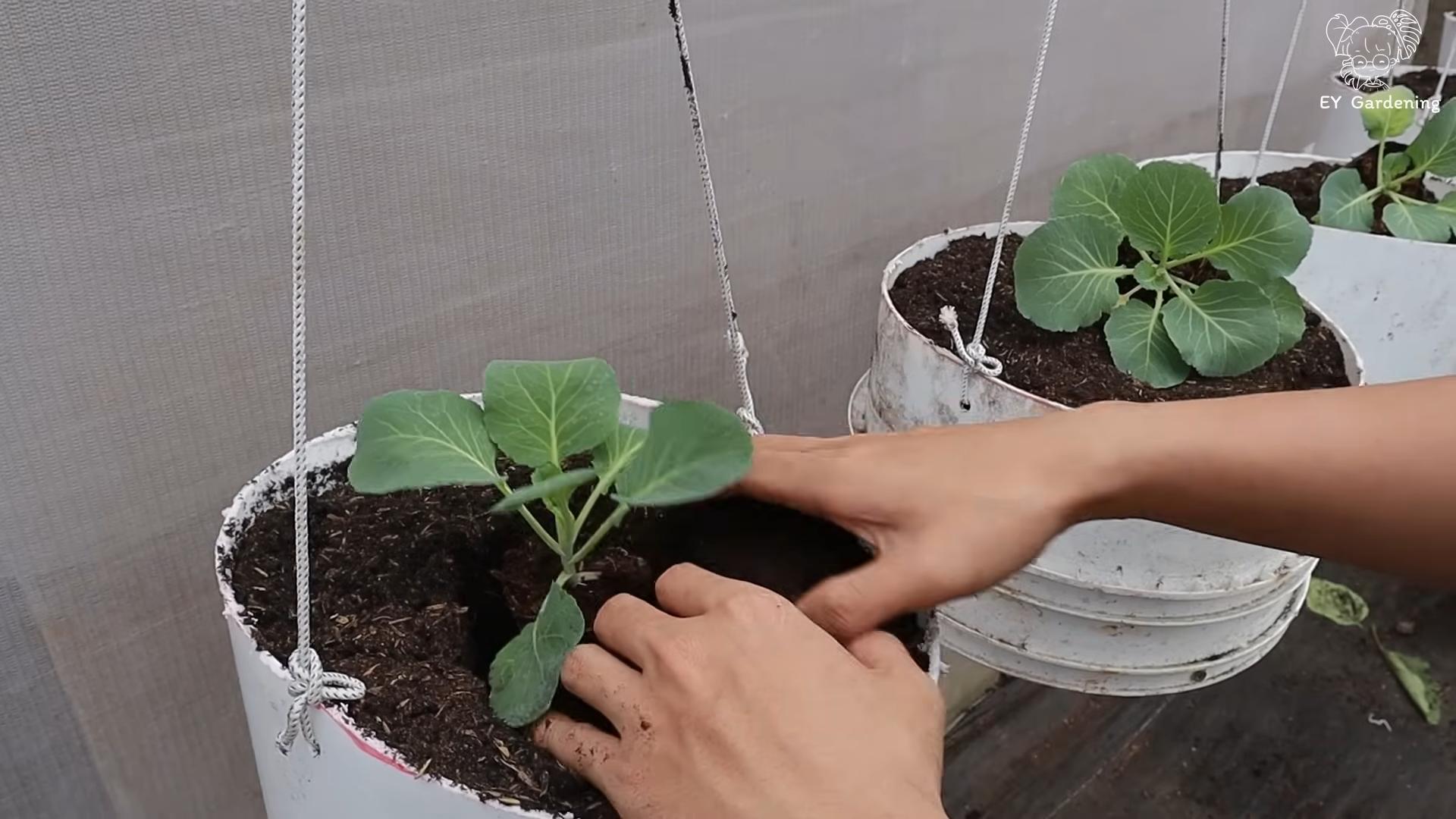
Conclusion
So, there you have it! Growing cabbage in containers isn’t just a possibility; it’s a rewarding and surprisingly simple way to bring fresh, homegrown goodness right to your doorstep. We’ve walked through the essential steps, from selecting the right container and soil to nurturing your cabbage plants to a bountiful harvest. But why should you take the plunge and try this DIY trick?
Firstly, container gardening offers unparalleled convenience. Whether you have a sprawling backyard or a tiny balcony, you can enjoy the satisfaction of growing your own food. No more trips to the grocery store for wilted, overpriced cabbage! Imagine stepping outside and harvesting crisp, vibrant leaves for your salads, slaws, or stir-fries. The flavor difference between store-bought and homegrown is truly remarkable.
Secondly, growing cabbage in containers gives you complete control over the growing environment. You can easily move your plants to chase the sun, protect them from harsh weather, and ensure they receive the perfect amount of water and nutrients. This level of control translates to healthier, more productive plants and a higher yield.
Thirdly, it’s a fantastic learning experience! Gardening is a journey of discovery, and growing cabbage in containers is a great way to deepen your understanding of plant life cycles, soil science, and the interconnectedness of nature. It’s a hands-on activity that can be enjoyed by people of all ages and skill levels.
But the benefits don’t stop there. Container gardening is also a great way to deter pests. By keeping your cabbage plants elevated and away from ground-dwelling insects, you can significantly reduce the risk of infestation. Plus, you can easily inspect your plants for any signs of trouble and take action before problems escalate.
Now, let’s talk about variations. While we’ve focused on the basics, there are plenty of ways to customize your container cabbage garden. Consider experimenting with different varieties of cabbage, such as red cabbage, savoy cabbage, or napa cabbage. Each variety offers a unique flavor and texture, adding variety to your culinary creations.
You can also companion plant your cabbage with other herbs and vegetables. Marigolds, for example, are known to repel pests, while dill attracts beneficial insects. Interplanting can create a thriving ecosystem in your containers, promoting healthy growth and reducing the need for chemical interventions.
Another fun variation is to succession plant your cabbage. By planting seeds or seedlings every few weeks, you can ensure a continuous harvest throughout the growing season. This is a great way to maximize your yield and enjoy fresh cabbage for months on end.
Finally, don’t be afraid to get creative with your containers. While plastic pots are perfectly functional, you can also use repurposed items like old buckets, wooden crates, or even fabric grow bags. Just make sure your container has adequate drainage and is large enough to accommodate the mature size of your cabbage plant.
So, what are you waiting for? Grab a container, some soil, and a few cabbage seedlings, and get started on your container gardening adventure today! We’re confident that you’ll be amazed by the results.
We encourage you to try this DIY trick and share your experience with us. Post photos of your container cabbage garden on social media using the hashtag #ContainerCabbage or leave a comment below to let us know how it went. We love hearing from our readers and learning about your gardening successes (and challenges!). Your feedback helps us improve our content and inspire others to try growing their own food. Remember, even if you encounter a few bumps along the road, don’t give up! Gardening is a process of trial and error, and every mistake is an opportunity to learn and grow. Happy gardening!
Frequently Asked Questions
What is the best size container for growing cabbage?
A good rule of thumb is to use a container that is at least 12 inches in diameter and 12 inches deep. However, larger is generally better, especially for larger cabbage varieties. A 5-gallon bucket or a similar-sized container will provide ample space for the roots to develop and the plant to thrive. If you’re planning on growing multiple cabbage plants in the same container, you’ll need to increase the size accordingly. Crowding can lead to stunted growth and reduced yields.
What type of soil should I use for container cabbage?
Cabbage plants prefer well-draining, fertile soil that is rich in organic matter. A good potting mix specifically formulated for vegetables is ideal. Avoid using garden soil, as it can be too heavy and compacted for container gardening. You can also amend your potting mix with compost, aged manure, or other organic materials to improve its fertility and drainage. A slightly acidic soil pH of around 6.0 to 6.5 is optimal for cabbage growth.
How often should I water my container cabbage?
Cabbage plants need consistent moisture to thrive, especially when grown in containers. Water deeply whenever the top inch of soil feels dry to the touch. Avoid overwatering, as this can lead to root rot. The frequency of watering will depend on factors such as the weather, the size of your container, and the type of soil you’re using. During hot, dry periods, you may need to water your cabbage plants daily. Mulching around the base of the plants can help to retain moisture and reduce the need for frequent watering.
How much sunlight does container cabbage need?
Cabbage plants need at least 6 hours of direct sunlight per day to grow properly. Choose a location for your container cabbage garden that receives plenty of sunlight throughout the day. If you live in a hot climate, you may need to provide some afternoon shade to prevent the plants from overheating. You can also use grow lights to supplement natural sunlight, especially if you’re starting your cabbage plants indoors.
What are some common pests and diseases that affect container cabbage?
Cabbage plants are susceptible to a variety of pests and diseases, including cabbage worms, aphids, flea beetles, and clubroot. Regularly inspect your plants for any signs of infestation or disease. You can control pests by handpicking them off the plants, using insecticidal soap, or applying Bacillus thuringiensis (Bt), a natural bacterium that is toxic to cabbage worms. To prevent diseases, ensure good air circulation around your plants, avoid overwatering, and use disease-resistant cabbage varieties.
How do I fertilize my container cabbage?
Cabbage plants are heavy feeders and require regular fertilization to produce a good harvest. Use a balanced fertilizer that is specifically formulated for vegetables. You can also use organic fertilizers such as compost tea, fish emulsion, or seaweed extract. Fertilize your cabbage plants every 2-3 weeks, following the instructions on the fertilizer package. Avoid over-fertilizing, as this can lead to excessive foliage growth and reduced head formation.
When is the best time to harvest my container cabbage?
Cabbage is typically ready to harvest when the head is firm and compact. The exact time will depend on the variety of cabbage you’re growing and the growing conditions. Check the seed packet or plant tag for specific harvesting information. To harvest, simply cut the head off the plant at the base, leaving a few outer leaves intact. You can store harvested cabbage in the refrigerator for several weeks.
Can I grow cabbage in containers during the winter?
In many regions, you can grow cabbage in containers during the winter, especially if you choose cold-hardy varieties. Provide protection from frost and freezing temperatures by moving your containers to a sheltered location or covering them with a frost blanket. You may also need to reduce watering during the winter months. With proper care, you can enjoy fresh, homegrown cabbage even during the coldest months of the year.
What are some good companion plants for container cabbage?
Companion planting can help to improve the health and productivity of your container cabbage garden. Some good companion plants for cabbage include marigolds, dill, rosemary, thyme, and nasturtiums. Marigolds repel pests, dill attracts beneficial insects, and rosemary and thyme deter cabbage moths. Nasturtiums can act as a trap crop, attracting pests away from your cabbage plants.
Can I regrow cabbage from the stump?
Yes, you can often regrow cabbage from the stump after harvesting the main head. After cutting off the head, leave a few outer leaves intact and continue to water and fertilize the plant. New shoots will emerge from the stump, eventually forming smaller heads of cabbage. While these secondary heads may not be as large as the original head, they can still provide a tasty and rewarding harvest. This is a great way to extend the life of your cabbage plants and get the most out of your container garden.

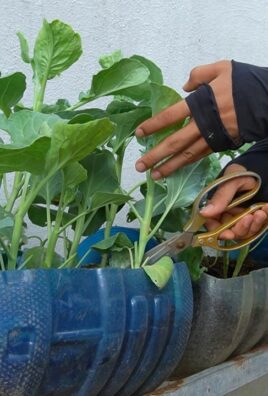
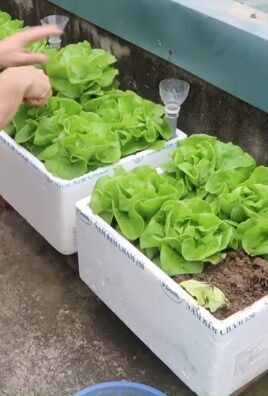
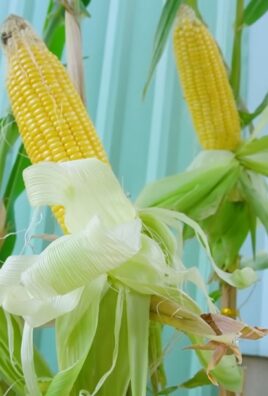
Leave a Comment